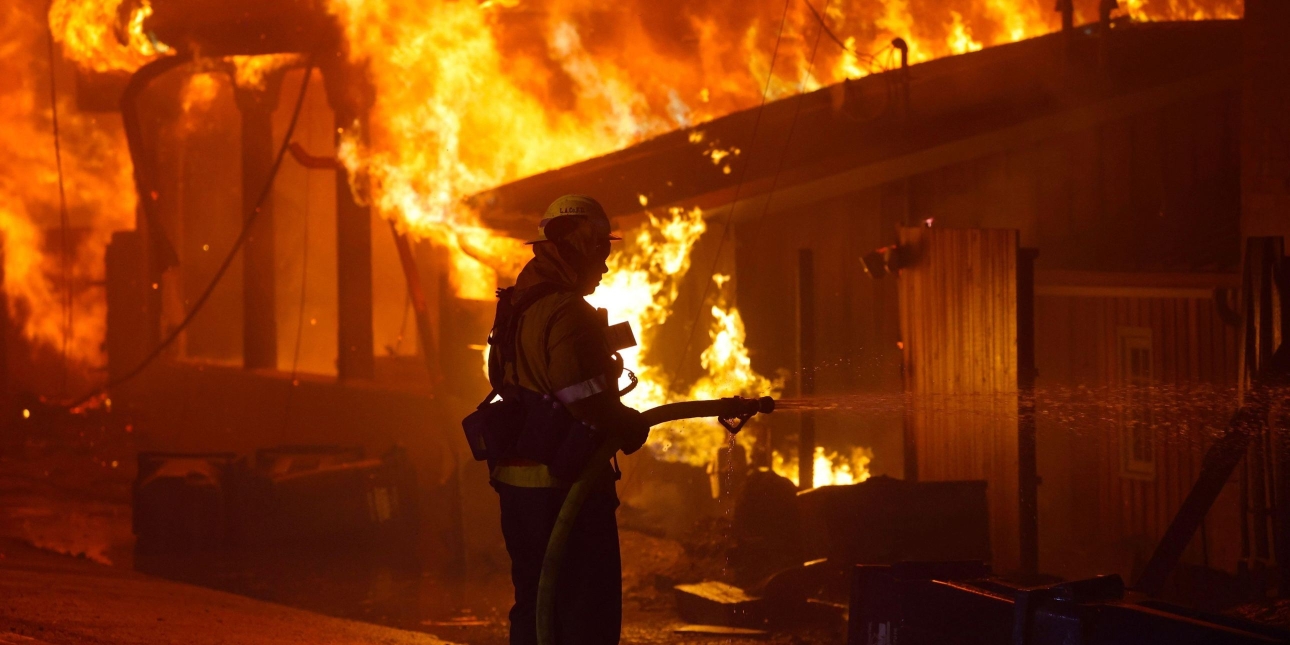What do the LA fires teach us about emergency communications?
And what should be in our emergency communications playbook for climate-induced disasters?
It seems hard to believe that it’s almost two months since the devastating wildfires began in Los Angeles. The statistics are eye-watering: 16,000 homes and buildings destroyed; over 40,000 acres burnt; a repair bill of $40bn. Another climate change-induced disaster – inevitable in this case owing to a perilous mix of high temperatures, reduced rainfall and warm Santa Ana winds to fan the flames.
Speaking personally, climate change has been worrying me for some time now. Four years ago, I was nearly crushed by a huge tree which fell on our (empty) car in the aftermath of a hurricane. My friend Donna recently moved from a now fire-damaged part of Los Angeles to Florida, only to be evacuated for Hurricane Helene. The CIPR Crisis Comms network’s co-chair Chris Tucker blogged about her experience in the Valencia floods last autumn.
While we are used to the term crisis communications in the corporate world – emergency communications is the term used for climate change and natural disasters. So what’s the difference? What should be in our emergency communications playbook for climate-induced disasters? And what lessons can we learn from past experiences?
Early and accurate communication
The early warning system seems to work well in the States and in both the case of the fires and the Florida hurricanes, people were warned and evacuated at speed. Not so in Valencia or even South Wales. A late and inaccurate yellow weather warning for Storm Bert left residents and businesses devastated by a month’s of rainfall in one weekend. So accurate and early warnings are imperative.
Frequent updates
As well as the emergency alert on our phones – which was successfully employed for Storm Darragh – we need immediate warnings across all broadcast channels. This should be followed by regular updates highlighting any potential risks and necessary actions that need to be taken.
Clarity and consistency
I would argue that when it comes to language, this is where the gap narrows between crisis and emergency communications. Messages need to be understood, and quickly. Trusted sources of information should be prepared to disseminate clear and consistent messages.
It’s particularly important that messages are tailored for vulnerable populations, speakers of foreign languages and those with disabilities. This was one of the learning points from the pandemic with some government communications not being translated into foreign languages.
Channels
While social media channels must play their part in an emergency, algorithms prioritise content that provoke strong emotional responses. This can lead to fear or panic during emergencies. It’s also worth pointing out that some groups may not have access to digital tools. So over-reliance on social media when it comes to emergency communications is to be avoided.
In his excellent article, Emergency Communication: Lessons Unlearned and New Threats, crisis expert Phillippe Borremans highlights the need to develop a regularly updated and trusted ‘rumour control’ website. This would help to stem the flow of any misinformation and disinformation on social media during an emergency.
Community engagement
Community leaders and organisations need to be at the heart of any regional emergency communications strategy. If spokespeople are from trusted members of the local community, the public are more likely to believe them and act accordingly in response to warnings.
Climate change risk register
One of the key lessons from LA is that the wildfires were predicted but not prevented. Prescribed burns – limited burning of low growing vegetation under the watchful eyes of emergency services – were prevented by Californian environmental law. In areas that are at the highest risk of climate disasters, emergency scenario planning, aligned with an escalating climate change risk register, have to take priority above everything else.
Different disaster, different playbook
These need to be tailored according to the type of disaster, for example:
Floods
Evacuation routes and procedures
Accurate tidal and weather predictions
Flood safety measures
Emergency supply distribution (eg sandbags)
Wildfires
Fire evacuation plans
Air quality updates
Fire safety precautions
Heatwaves
Heat safety tips
Vulnerable population warnings
Temperature updates
Be prepared, act fast
Here in the UK, all regional councils in the UK should be planning for climate emergencies within their community. Yet speaking as a resident of Worcestershire, where there were multiple floods last year, there have been no official communications on basic preparations.
But this may be about to change. As part of their new ‘Prepare’ campaign, the government outlines how the public should prepare for emergencies and provide community support. Similarly, their ‘Resilience and Capabilities’ programme aims to increase the capability to respond to and recover from civil emergencies.
As crisis communications practitioners we are used to the mantra ‘act fast’. But if the LA fires have taught us anything we need a new mantra for emergency communications: ‘act fast, get smarter’.
Rosie Hamilton is the social media manager of the CIPR Crisis Comms Network where this post was first published.

